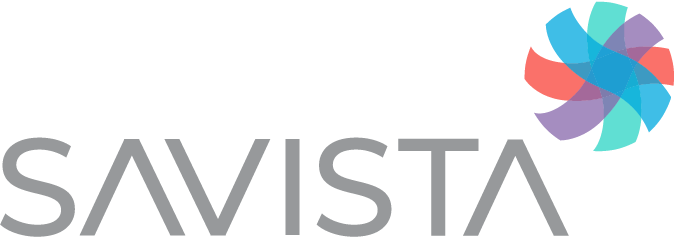Healthcare providers across the U.S. are losing billions of dollars annually due to revenue cycle inefficiencies. Many organizations are opting to partner with a revenue cycle services organization to minimize revenue gaps and improve their bottom line. Once a revenue cycle partner is selected, a thorough assessment should be completed prior to the start of any services to ensure the services provider deeply understands the needs of your organization, and where the biggest impacts to your revenue cycle can be made. A comprehensive assessment allows service providers to identify inefficiencies, identify patient documentation gaps, assess coding education needs, or streamline their billing, receivables, and denial processes, just to name a few. The outcome of an assessment done right is to maximize revenue capture, minimize denials, improve operational workflows, and enhance overall financial performance. Ultimately, challenges and issues are identified and the right scope of services are provided to provide financial success and growth.
As a rule of thumb and best practice, a client assessment should be done in person. In-person interactions help to build relationships, ensure communication is clear, and ensure that a complete picture of the challenges the organization is facing and the help needed can be obtained. You want the time spent to have as much value as possible, and in-person assessments tend to be easier to conduct and yield the most impactful results.
However, there are rare instances where a remote assessment may be the only option. COVID, travel, and remote staffing situations may impact the ability of an RCM partner to conduct an in-person assessment. When a remote client assessment is the only viable path, what are the best practices to ensure success? There are steps the service provider should take to ensure the optimum outcome of a remote assessment as well as deliverables that the client should be asking for. As a client, follow these steps to make sure you are getting the most out of your remote assessment.
Remote Assessment Best Practices
1. Set realistic outcomes and expectations
Understand that unlike in-person assessments, remote assessments have hurdles to overcome and, as such, identify achievable goals.
Share relevant information to accurately direct the assessment and inform the process.
Set clear expectations and aligned stakeholders foster trust and transparency and reduce frustration and disappointment in the assessment process.
Ensure the client organization plans and allocates the necessary technology, personnel, and time required for conducting the remote assessment successfully.
Remember: When stakeholders believe they can reach the desired outcomes, they experience increased engagement, commitment, and motivation to put in the necessary effort to achieve those outcomes.
2. Clearly establish what the client will receive during and following the assessment
Create, publish, and adhere to firm schedules.
Identity outcome-based information that will be reported or shared to provide a clear understanding of the assessment.
Clearly articulating client deliverables highlights the value proposition of the assessment and sets unmistakable contractual obligations.
Clarify the specific areas, topics, or aspects that the assessment covers, as well as any limitations or exclusions, to ensure a shared understanding of the assessment’s scope.
Provide accountability for delivering the agreed-upon outcomes and ensure that the assessment meets the required standards and quality.
3. Properly scope the engagement
Designate and engage the right resources on the client side. This is critical to the process. By involving key stakeholders early on, organizations can gather diverse perspectives, incorporate valuable insights, and ensure that the assessment meets their needs and expectations.
Understand and state assessment needs as specifically as possible. A well-defined scope ensures that the assessors and the individuals being assessed share an understanding of what they are evaluating and why, thus helping the assessment to stay on track. It also enables effective reporting of results and maximizes the return on investment so that effort and resources are directed towards areas that provide the most value and impact.
Don’t be afraid of the challenges the assessment may reveal and embrace the clarity your efforts will have as a result.
4. Define and assign immediate action items
Offer practical guidance, a roadmap for improvement, and clarity to help navigate the complexities of addressing identified issues.
Allow the client to take prompt action to address concerns to prevent any negative impact on their performance or goals.
Keep the client resources engaged and energized to make positive changes.
Provide tangible and measurable results, evidence of the assessment's value; and proves out the assessment as a catalyst for positive change. Clients can track their progress and evaluate the impact of their actions.
5. Understand when an onsite assessment is the better path: Play out assessment scenarios to decide between remote or in-person
Some assessments require direct observation or evaluation of the physical environment, equipment, or infrastructure. In-person assessments can obtain necessary visual or tactile information that remote assessments may lack.
In certain situations, the sensitivity of the data or the need for confidentiality may require an onsite assessment. Conducting the assessment onsite allows for better control over data security and confidentiality.
In cases where the technology infrastructure is unreliable or insufficient, an onsite assessment may be more feasible and reliable.
Assessments that involve complex systems, large-scale operations, or multi-faceted environments may benefit from an onsite approach for a better comprehensive view and understanding of the intricacies involved. The assessment of interactions, dependencies, and interrelationships may be easier to conduct onsite.
In conclusion, remote assessments are a reality and sometimes a necessity. While it is challenging to deliver the same level of detail as an onsite assessment, by committing to best practices and collaborating with a partner that is equally vested in the remote assessment, better outcomes and a solid foundation for improved revenue cycle management programs can be achieved.




